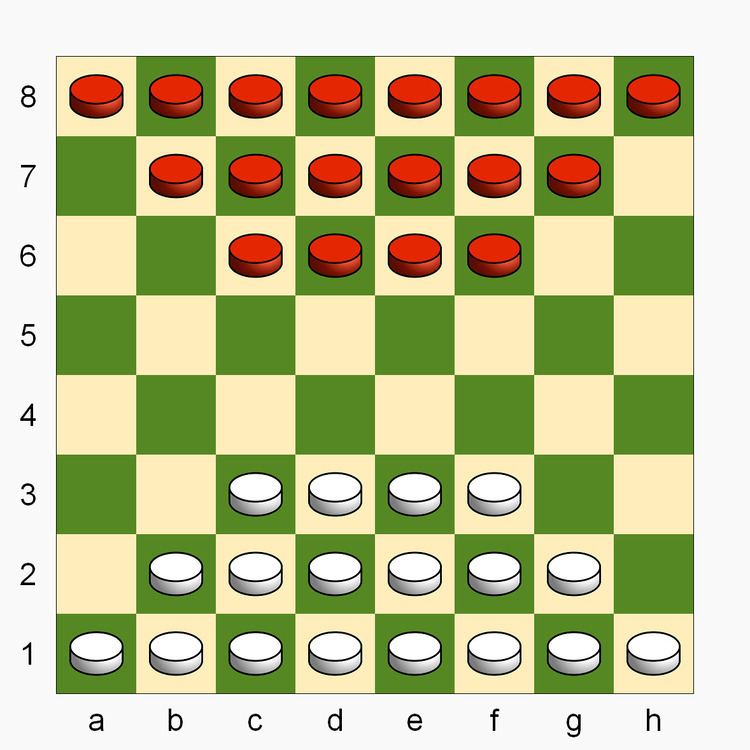Dameo is a strategy board game for two players invented by Christian Freeling in 2000. It is a variant of the game draughts (or checkers) and is played on an 8×8 checkered gameboard.
Dameo owes much of its existence to the game Croda invented in 1995 by Ljuban Dedić of Croatia, Associate Professor of Mathematics at the University of Split and the 1989 International Checkers champion of the former Yugoslavia. Croda, the result of a search for the checkers variant with the smallest percentage of draws, is itself a variation of Turkish draughts. Dameo differs from Croda in its initial setup and number of men, enhanced movement of kings, and the addition of linear movement of a line of men.
In Dameo:
a man may move one step straight or diagonally forward;an unbroken line of men (of any length) may move one step forward along its line (if the cell ahead is empty);kings move like a queen in chess (any number of unobstructed spaces in any direction);capturing is always performed orthogonally (forwards, backwards, or sideways).Other than the above, the rules for Dameo can be taken directly from those for international draughts (checkers). For convenience, these have been summarized below. (Else see International draughts#Rules.)
White moves first, then moves alternate; a player may not pass (skip) a turn.Men move forwards (not backwards). If a man reaches the last row of the board (the row nearest his opponent) at the conclusion of a move, it promotes to king; the promoted man is crowned for identification as king by placing a second checker of the same colour on top.Jumping (capturing) is mandatory, including making multiple jumps if available. If there are jumping options, the player must always select the option that captures the maximum number of the opponent's pieces (men or kings); if two options capture the same number, the player may choose.A multi-jump can consist of single jumps having a combination of different directions.Pieces jumped in a multi-jump are removed from the board only after the jumping move is complete.A king can make a flying king move (move any number of contiguous empty cells) or capture (capture a piece any number of empty cells' distance away).When a king jumps, it may land on any empty cell beyond the jumped piece. (Unless there is a requirement to land on a particular cell, in order to continue jumping according to the rule mandating that all jumps capture maximum pieces.)During a multi-jump, a piece may not be jumped more than once. (Empty cells, however, may be visited or jumped any number of times.)A player whose pieces all become captured, or is unable to make a legal move, loses the game.If the players agree, or if the same position repeats three times with the same player having the move, the game is a draw.
